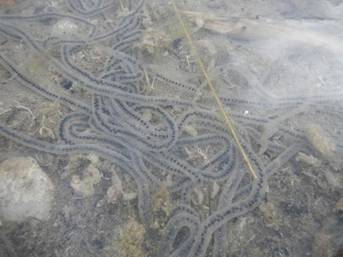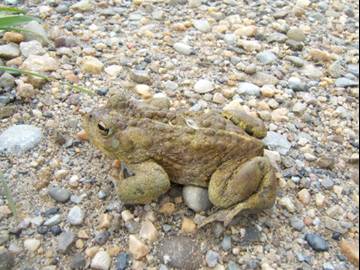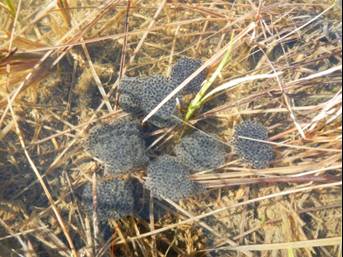Species at Risk
Guest Blog
By Lisa Wilkinson, Species at Risk Biologist, Alberta Environment and Parks
At this time of year, amphibians are sleeping away the winter, hibernating underground or in mud at the bottom of ponds. Around the globe amphibian populations are declining. Here in Alberta all but 3 of our 10 species of amphibians are at some level of risk.
The good news is that people are helping to monitor amphibian populations. A dedicated group of volunteers in the Canmore area is continuing a long-term amphibian study (originally started by researchers). Because amphibian populations naturally fluctuate it is necessary to monitor them for several years to identify potential declines.
These intrepid volunteers help at two key times in the amphibian life cycle:
1. Early summer when amphibians travel to ponds to breed and lay eggs, and
2. Late summer when tadpoles have transformed into young adults and leave the pond
What do volunteers do?
- Visit ponds in early summer to look for signs of breeding. Did you know that you can distinguish amphibian species by their eggs?
- Operate pitfall traps at a designated pond in late summer to determine if amphibians bred successfully, based on captures of young adults.
Pitfall trapping: Drift fencing is placed around the pond and traps (flowerpots embedded in the ground) are placed at 10 mintervals along the fencing. Amphibians are not harmed when they fall into the traps, which are checked often.
Five species of amphibians have been detected in the Canmore area: Columbia spotted frog, wood frog, boreal chorus frog, boreal toad and long-toed salamander.
Anyone, anywhere in Alberta, can submit observations of amphibians by participating in the Alberta Volunteer Amphibian Monitoring Program. Amphibian monitoring provides essential information to help protect amphibians and their habitats.  Visit: http://www.ab-conservation.com/avamp/overview/
Visit: http://www.ab-conservation.com/avamp/overview/



